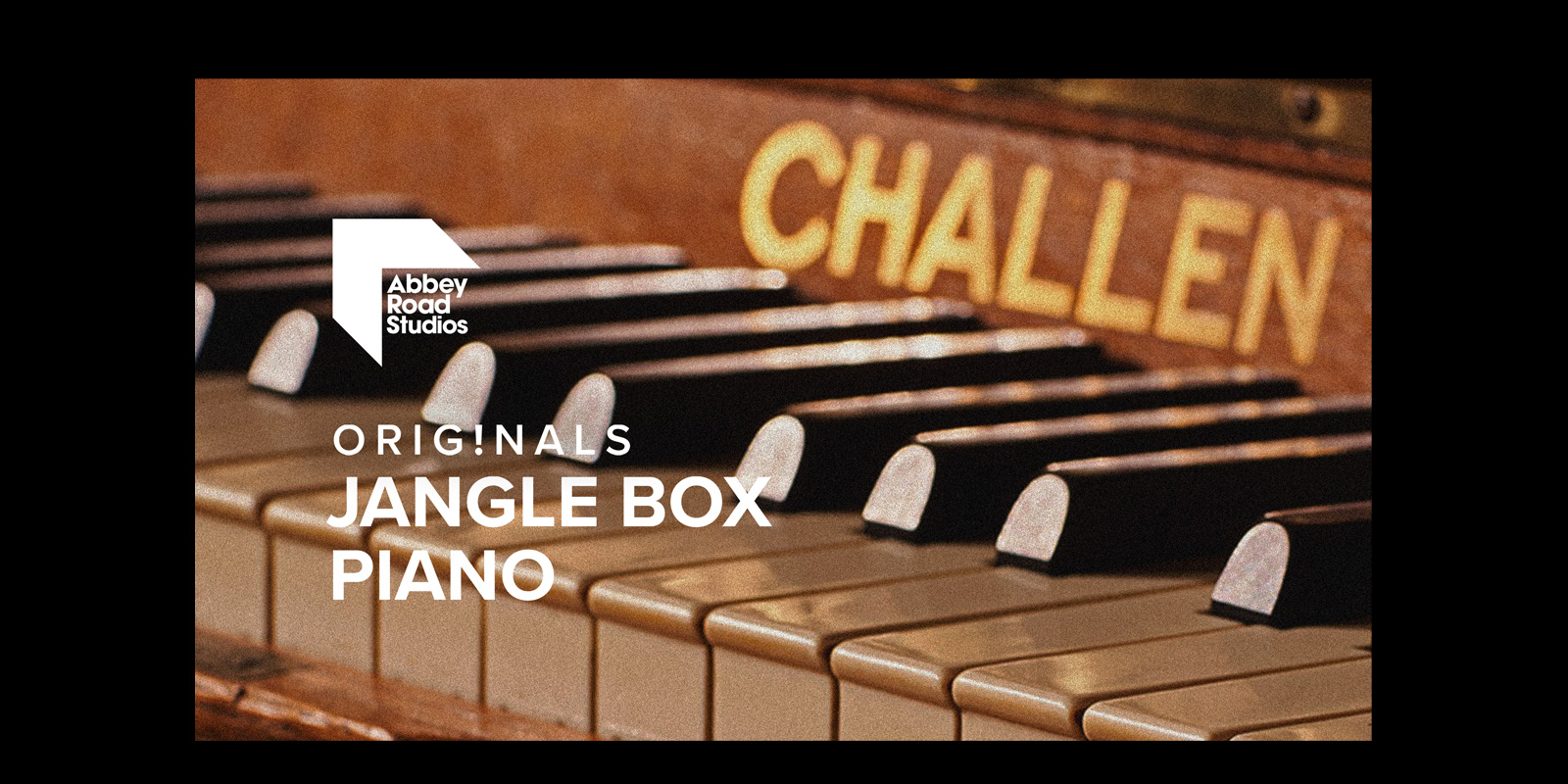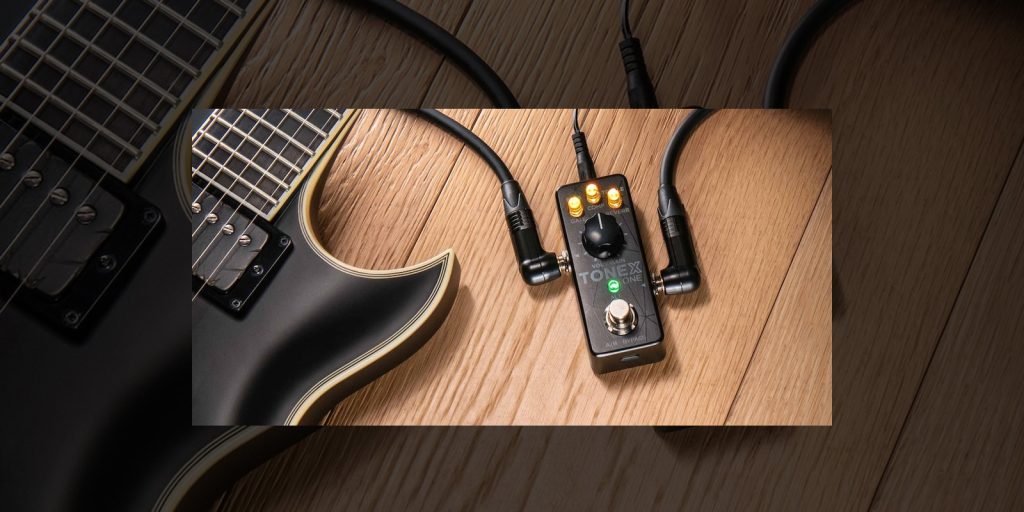The famous Abbey Road Challen: a piano with two distinctive characters.
£29 / $29 / 29€
In partnership with the world-famous Abbey Road Studios, Spitfire Audio is proud to present Originals Jangle Box Piano — capturing a unique piece of music history. Expertly recorded in Studio Two, the legendary home of pop and rock’n’roll, this versatile piano was made famous during the ‘60s pop era at Abbey Road following its use on recordings by artists including The Zombies, John Barry and The Beatles, featuring prominently on The Beatles (The White Album) and Magical Mystery Tour — most notably on the track The Fool on the Hill. Its most recent appearance is on the Oscar-nominated Celeste track, Hear My Voice, from hit 2020 film The Trial of the Chicago Seven, co-written with the film’s composer Daniel Pemberton, who uses this piano on a range of his scores, including 2019 hit Beatles-inspired film Yesterday. A Challen ‘studio’ piano, it features brass-tipped felt strips that can be dropped between the hammers and strings, emulating the sound of a ‘tack’ piano. This result is an instrument with two distinct characters: in its original form, beautiful, mellow and dark; and in tack mode, percussive and bright.
This truly iconic instrument, captured in the most famous recording space in the world, is now accessible to musicians of all levels, across the globe. The sounds have been meticulously sampled at Abbey Road Studio Two, mixed by Grammy award-winning engineer Sam Okell (The Beatles remasters) and presented in Spitfire Audio’s award-winning, easy-to-use and affordable plug-in. Four of the presets are presented in tack mode, ranging from close to balanced, while the two Mellow presets showcase the piano’s warm non-tack sound. Alongside the Close and Room signals, a Vintage signal, recorded using the original 1960s equipment — including the rare AKG D19 microphone recorded using the valve J37 tape machine via the REDD.47 mic pre-amp — authentically captures the iconic Abbey Road sound and the character of the songs that made the piano famous. The six effects offer even more control — Expression, Dynamics, Reverb — taken from Abbey Road’s 1950s EMT reverb plates, Tightness, as well as a hammers volume control and sustain pedal volume control for extra detail and realism.
THE STORY
Built in the 1930s at Piano Works, London, from beautifully handcrafted hard maple, this Challen ‘studio’ piano (slightly smaller than an upright) was one of the most important Beatles instruments. It is known as a piano of two distinctive sounds: its original, warm and mellow tone, and its contrasting bright tack sound, for which it owes its namesake. The piano has brass-tipped strips of felt that can be dropped between the hammers and the strings to create a hard, percussive note. Because of this feature, achieved by operating the centre piano pedal, it became commonly known among Abbey Road studio engineers and visiting artists as the ‘Jangle’ or ‘Jangle Box’ piano.
In its normal setting, the piano has a beautiful mellow, dark mid-range tone, and an incredibly long sustain. While another famous Abbey Road piano – Mrs Mills – was kept out of tune, the Challen was properly tuned, providing a warm, mellow alternative to the heavier sound of the grand piano.
It can be heard prominently on The Fool on the Hill, played by Sir Paul McCartney, and from 1966 was used extensively by The Beatles on both Magical Mystery Tour and The Beatles (The White Album). Further credits include The Zombies Care of Cell 44 (in tack mode) and Pink Floyd Bike from Piper At The Gates of Dawn (used in tack mode, but also recorded at half-speed). It was also used by artists including John Barry, Joe Loss, Sid Phillips, Matt Monro and Billy Cotton. The piano is still in use today.
ABBEY ROAD, STUDIO TWO
Abbey Road Studios is the home of countless landmark recordings. Indisputably the most famous recording venue in the world and a global music icon itself, it has been at the heart of British music for almost 90 years.
The studio is famed for innovation in equipment, technology and recording techniques, following EMI’s research and development division’s custom-built mixing consoles, outboard gear and microphones built to meet the needs of studio engineers and artists — equipment which was only available to EMI studios, and never sold commercially. Combined with the expertise of engineers and the unique acoustic properties of the studios, this facilitated what has come to be known as the “Abbey Road Sound”.
In contrast to the film scoring legacy of Studio One, Studio Two is known for producing some of the most popular pop and rock recordings of all time. It is synonymous with the legendary work of The Beatles, who with EMI / Parlophone producer Sir George Martin recorded 190 of their 210 songs at the studio. A versatile room which has changed very little since the ‘60s, it has a warm acoustic which was originally built for smaller string sections and big bands. It was soon taken over by Parlophone and used to record comedy, early rock’n’roll and later, various landmark records by countless iconic artists including Shirley Bassey, The Beatles and Pink Floyd, through to Kate Bush, Oasis and Radiohead, while more recent sessions include Kano, Celeste, Ed Sheeran and Sam Smith.
SPITFIRE AUDIO ORIGINALS SERIES
This library follows the pioneering British music technology company’s recent releases made in collaboration with Abbey Road Studios. The Abbey Road One range features full orchestral sample libraries exquisitely recorded in Studio One, the home of blockbuster film scores. This is the second Abbey Road Piano to be released in Spitfire Audio’s Originals range, following the Sir Paul McCartney-approved Originals Mrs Mills Piano, released in March 2021. Sir Paul McCartney said of the Originals Mrs Mills Piano: “Really exciting for me to hear Spitfire’s sampling of what we used to call Mrs Mills piano from Abbey Road. It’s great to have it on my computer.”
Originals is a series of inspiring sample libraries that makes rare and classic instruments accessible to all for just £29 $29 29€ — meticulously sampled in authentic detail, with no compromise on recording quality. NKS compatible and lightweight at under 8GB, users can tailor the piano to suit a range of styles and genres — from pop, to jazz and cinematic scores — through a range of carefully curated signals, presets and controls.
SIGNALS
Close (tack mode) – a pair of Neumann U67 microphones for a crisp, defined sound / Ribbons (non-tack mode) — a pair of Coles 4038 ribbon mics
Room – A pair of omni condenser microphones, giving a spacious image of the piano and the room
– The classic ‘60s Abbey Road recording chain. Now extremely rare, the AKG D19 was placed above the strings in the middle of the piano and recorded using the all-valve J37 tape machine via the REDD.47 mic pre-amp
PRESETS
Tack Piano:
Close Tacks: The close microphones with the tacks, a direct and bright sound
Clean Tacks: The close and room microphones blended for an upfront and modern sound.
Balanced Tacks: All signals together with the tacks, a balanced and characterful sound
Vintage Tacks: The vintage sound that made the piano famous.
Piano:
Mellow Without Tacks: All signals together capturing the mellow character of the piano, without tacks
Vintage Without Tacks: The vintage sound that made the piano famous.
CONTROLS
Expression
Dynamics
Reverb – One of Abbey Road’s 1950s EMT Plates with the decay set to 2.5 seconds
Tightness – This cuts further into the note to make it tighter
Hammers – Controls the volume of the piano’s hammers
Pedal – Controls the volume of the sustain pedal noise
NKS Compatible
~8GB





